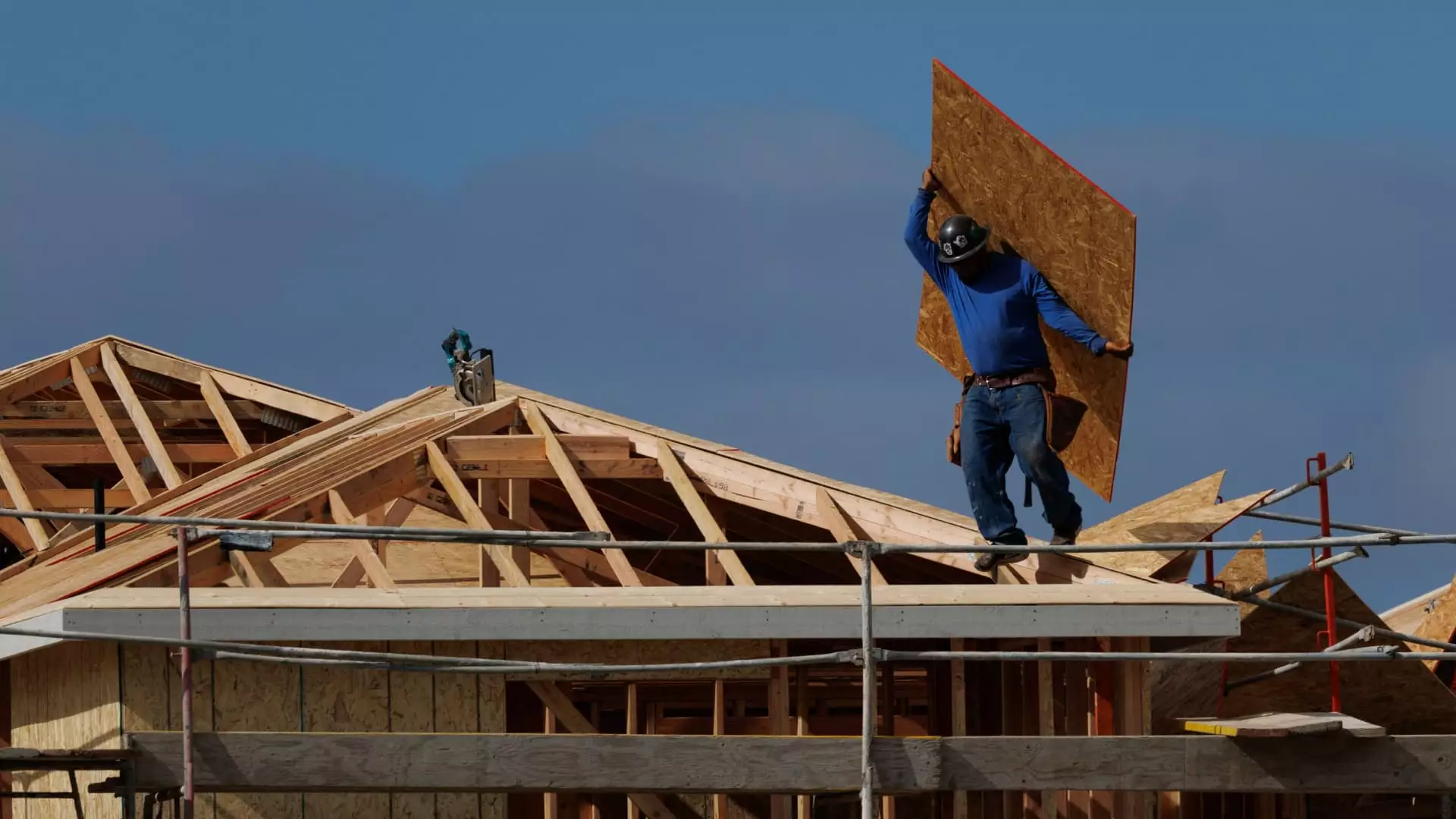The recent trajectory of the housing sector paints a concerning picture for prospective homeowners and the broader economy alike. Despite marginal improvements in builder sentiment—an increase from 32 to 33 on the NAHB index—there remains a profound sense of pessimism that is unlikely to reverse easily. For over a year and a half, this index has languished below the neutral threshold of 50, signaling that the industry is mired in negative territory. Far from a passing phase, this decline reflects fundamental issues—chief among them, the pervasive problem of affordability exacerbated by persistent high mortgage rates.
The response from home builders—most notably, significant price cuts—underscores their desperate attempt to sustain sales in an increasingly challenging environment. The fact that 38% of builders resorted to price reductions in July alone, the highest in recent memory, highlights the severity of their predicament. These concessions average a modest 5%, yet their implications are profound. This strategy, while temporarily boosting buyer activity, erodes margins and raises questions about the long-term viability of the sector. Builders are caught between a rock and a hard place: reduce prices to stay afloat or hold firm and risk complete sales collapse.
Mortgage Rates and Market Affordability: A Deadly Combo
Central to the ongoing crisis is the stubbornly high mortgage interest rate. Despite legislative efforts like the recently passed budget act—which infusioned some tax relief—the housing market remains hamstrung by elevated borrowing costs. These conditions diminish affordability for middle-class families, deterring new demand at a time when population growth and urbanization traditionally fuel housing needs.
Builders have routinely resorted to mortgage rate buy-downs to lure buyers, a tactic that somewhat cushions demand but at the expense of profit margins. This strategy indicates an industry working on thin margins, susceptible to margin erosion if price cuts intensify. Industry analysts like UBS’s Jonathan Woloshin warn against over-relying on such tactics, noting that outright price reductions could lead to larger profit squeezes without necessarily increasing sales volume sufficiently to offset losses.
This delicate balancing act exposes the sector’s fragility. When builders are forced into more aggressive pricing strategies, they threaten their financial stability, risking a downward spiral that could threaten the health of the entire housing economy.
Economic and Regional Disparities in Builder Confidence
The regional variations in sentiment reveal a complex landscape. The Northeast shows a slight uptick in builder optimism, but the Midwest remains stagnant, and the South and West continue to experience declines. This geographic discrepancy hints at underlying economic disparities—stronger regional economies perhaps less vulnerable to the broader issues pinching the housing sector.
Yet, the overall trajectory remains downward. Current sales conditions barely improve, and buyer traffic—crucial for sustaining construction activity—is at its lowest point in over two years. This decline in traffic signals not just a slowdown but a fundamental shift with potentially lasting repercussions. If buyer reluctance persists, the decline in single-family home starts is inevitable, further aggravating the slowdown.
The economist Robert Dietz’s forecasts suggest a bleak outlook: continued declines in permits, fewer new constructions, and diminished builder expectations. For center-right policymakers and stakeholders, this should serve as a wake-up call—housing is a core pillar of economic vitality, and its deterioration could translate into broader economic stagnation, weakened consumer confidence, and reduced labor activity.
While the industry’s current state may seem temporarily manageable through price reductions and mortgage buy-downs, the underlying issues—affordability, rising interest rates, and sluggish demand—are structural. They threaten to reshape the housing market for years to come. It becomes clear that incremental solutions won’t suffice; more comprehensive reforms, market-stimulating policies, and a focus on sustainable affordability are essential to prevent a prolonged downturn. For those who believe in a resilient economic future grounded in pragmatic policies, the current housing decline offers both a warning and an opportunity for reform.

